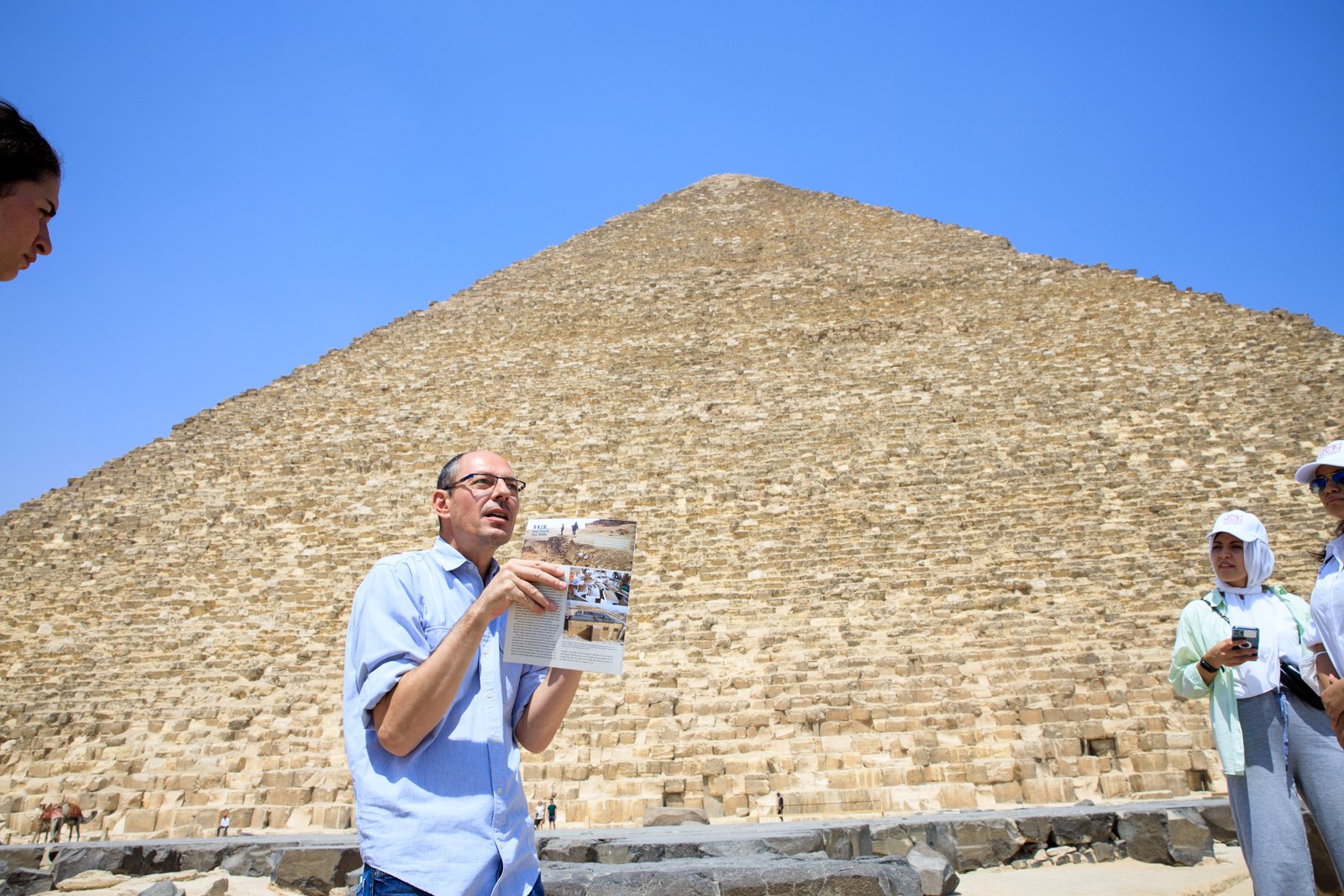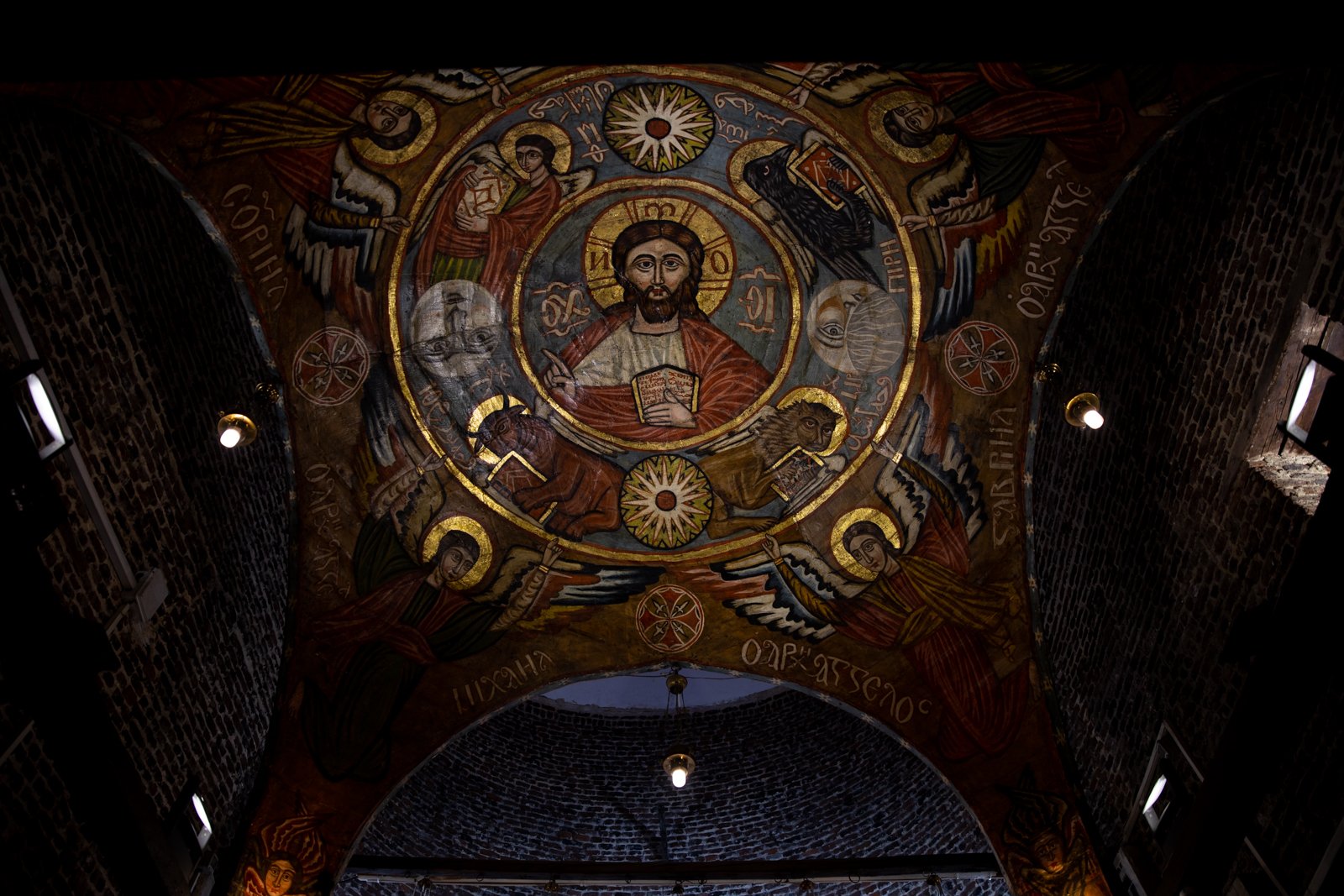Exclusive Media Tour in Cairo
In June 2022, the American Research Center in Egypt (ARCE) hosted an exclusive media tour in Cairo roaming some preserved sites that were previously conserved in partnership with the Ministry of Tourism and Antiquities (MOTA). The group visited three sites to get a live look of how ARCE’s cultural heritage projects prevent historical sites from further damage.
The first visit was to the Great Pyramid of Khufu which is of course known for being the largest pyramid ever built and one of the most popular tourist sites in the world. But visitors did not know that a grand temple once rose on the east side of the pyramid, nor did they realize, as they walked or rode horses and camels, that they were helping obliterate the scant remains of the temple, the central focus of the Great Pyramid Complex.
Supported by ARCE’s Antiquities Endowment Fund (AEF), Dr. Mark Lehner and Dr. Zahi Hawass teams began work in September 2020 to comprehensively document the remains of the temple. They assigned a number to every physical feature left by an archaeological process or event, such as a hole cut into the bedrock, and then documented each feature. They positioned the features on a map and photographed and described them. All visible archaeological features were recorded: those reflecting the initial layout and construction of the building, some predating the temple, and others dating much later, such as blocks displaced when it was dismantled. Recording all archaeological remains was crucial to understanding the sequence of events at the site of the temple and how it was built.
Photo credit: Mostafa Abdel Aty
The second visit was to Bab Zuwayla in Old Cairo, which is one of three surviving gates that provided entry into the fortified medieval city of Cairo. Founded by the Fatimids in 969, al Qahirah, or Cairo, was a contained nucleus protected by a towering mudbrick wall (reinforced with stone in the 15th century). The Mamluk Sultan al-Mu’ayyad Shaykh constructed an adjacent mosque in 1415, as well as two elongated minarets on top of the existing watchtowers that flank either side of the gate. It is this unique architectural feature that physically sets Bab Zuwayla apart from two other surviving gates, Bab al Nasr and Bab al Futuh, and has made the gate such a distinctive monument within Historic Cairo. In 1998, the American Research Center in Egypt (ARCE) spearheaded an intense five-year conservation project, with support from the U.S. Agency for International Development and under the supervision of the project’s director Nairy Hampikian. Critical to this project was the removal, restoration and re-installation of Bab Zuwayla’s sizable wood and iron doors.
Photo credit: Mostafa Abdel Aty
The last visit was to the Church of the blessed Virgin Mary Saint George and Abu Sefein Zuwayla to preview some of the preserved icons that are considered a prominent feature of Coptic religious heritage. A number of icons, mostly from the 18th century, survive today and are said to be an evolution of the renowned Fayoum portraits that were common in Egypt’s Roman period.
In 1988, ARCE in collaboration and mutual cooperation with the Supreme Council of Antiquities and the Coptic Church set up on-site conservation workshops in a number of key locations, such as the Hanging Church in Old Cairo, Mary Girgis Church in Cairo, Deir Anba Abraam in Fayoum, Akhmim in Sohag and El Quossiyia in Assiut. Under the direction of Shawki Mehani Nakhla and co-director Father Maximous El Antony, two to three conservators and a handful of trainees were stationed in each conservation workshop to treat the icon collections.
Photo credit: Mostafa Abdel Aty
To read more articles on ARCE’s media tour, click here


